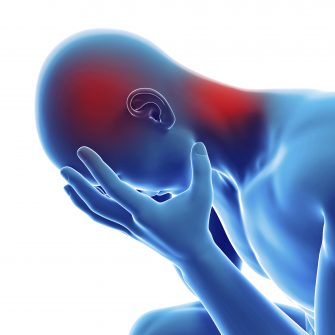Is Chiropractic Spinal Manipulative Therapy an Efficient Treatment Option in Cervicogenic Headache
 Purpose
Purpose
This study will highlight and validate chiropractic spinal manipulative therapy (CSMT) for cervicogenic headache (CEH). If the method proves to be effective, it will provide a new non-pharmacological treatment option for CEH. This is especially important since pharmacological management has minor effect in CEH, and alternative treatment options are warranted. The applied methodology of the study will aim towards the highest possible research standards. This international study is a collaboration between Akershus University Hospital, Innlandet Hospital and University of Oslo (UiO), Norway and Macquarie University, Australia. The multidisciplinary professional backgrounds are physiotherapy, chiropractic and medicine. By increasing the methodological quality of the investigators research to a very high level, the investigators see the method to work as a guide to increase the quality of chiropractic research in the future, as previous randomized clinical trials (RCTs) of CEH used methodology showing room for improvement.
Study hypothesis:
CSMT using the Gonstead method reduces days with CEH by at least 25% as compared to placebo (sham manipulation, i.e. broad non-specific contact, non-directional, low velocity and low amplitude) and no intervention (control group).
Further study details as provided by University Hospital, Akershus:
Primary Outcome Measures:
Number of headache days [ Time Frame: Change from baseline to post-treatment, 3, 6, 12 months follow-up ] [ Designated as safety issue: No ]
25% reduction in number of headache days between active treatment and sham.
25% reduction in number of headache days between active treatment and control group.
Secondary Outcome Measures:
Headache duration [ Time Frame: Change from baseline to post-treatment, 3, 6, 12 months follow-up ] [ Designated as safety issue: No ]
25% reduction in headache duration in hours between active treatment and sham.
25% reduction in headache duration in hours between active treatment and control group.
Self reported VAS [ Time Frame: Change from baseline to post-treatment, 3, 6, 12 months follow-up ] [ Designated as safety issue: No ]
25% self-reported improvement on VAS between active treatment and sham.
25% self-reported improvement on VAS between active treatment and control group.
Headache index [ Time Frame: Change from baseline to post-treatment, 3, 6, 12 months follow-up ] [ Designated as safety issue: No ]
25% reduction in headache index (frequency x duration x intensity) between active treatment and sham.
25% reduction in headache index between active treatment and control group.
Headache medication [ Time Frame: Change from baseline to post-treatment, 3, 6, 12 months follow-up ] [ Designated as safety issue: No ]
50% reduction in headache medication between active treatment and sham.
50% reduction in headache medication between active treatment and control group.
Other Outcome Measures:
Sub-analysis on x-ray findings [ Time Frame: Change formbaseline to post-treatment, 3, 6, 12 months follow-up ] [ Designated as safety issue: No ]
Sub-analysis will be done on participants with structural deformities vs. normal x-ray findings.
Publications: